Following the flag: Ohio History Connection preserves state's rich battle flag history
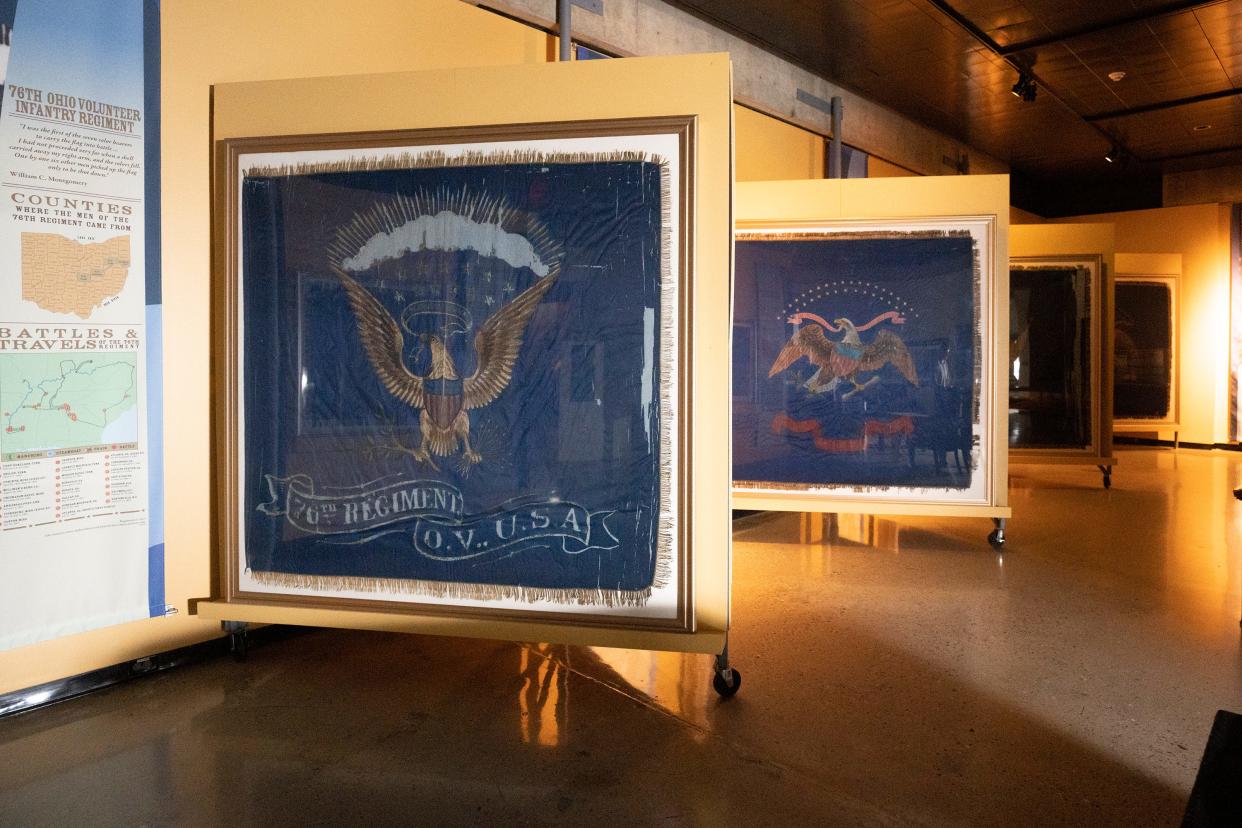
On a Civil War battlefield, the sight of a blue Union battle flag with an eagle seal flying in the wind meant you were surrounded by 1,000 of your closest friends.
And in the midst of a battle — with muskets cracking all around and thousands of men moving at once — a regimental flag was essential for knowing where to go and when to retreat. The flags inspired pride and represented the unit, something men were prepared to die for.
“Men died protecting those flags,” Sgt. Joshua Mann, historian for the Ohio National Guard, said. “I don’t think there's an object that identifies with a unit more than their flags ... When you think about the history of a unit, that's what draws you to telling the story.”
Today, in the era of mechanized warfare, the battle flag has taken on more of a ceremonial significance rather than a tactical one. For the Ohio National Guard and the Ohio History Connection, the retired battle flags are in a new battle: preserving their history into the future.
The Ohio Adjutant General's Department, which is responsible for the command of the Ohio National Guard, owns nearly 950 battle flags going from the Mexican-American war to today. Over half of the flags, including most of the pre-World War II flags, are curated and maintained by the Ohio History Connection, a statewide organization tasked by Ohio law with preserving and maintaining Ohio history.
Raising the standard of history
Around a dozen preserved Civil War battle flags are on public display in the "Follow the Flag" exhibit at The Ohio History Center, with most being stored off site. Made of a delicate silk, the flags were produced in New York City, Philadelphia and Cincinnati, Ben Baughman, Ohio History Connection curator said. Many flags used by Ohio regiments were made in Cincinnati.
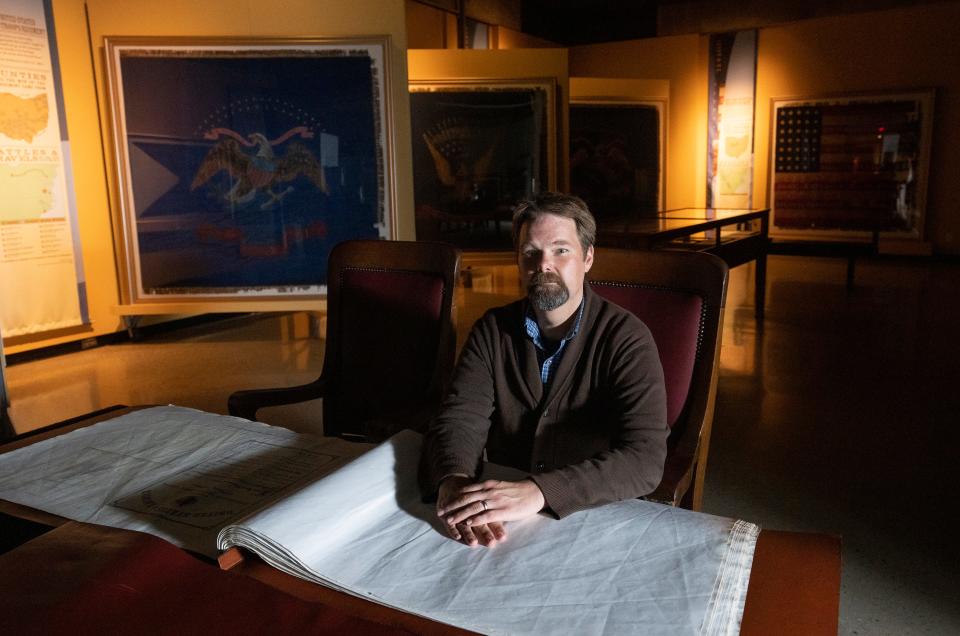
In battle, they would be carried by a soldier alongside the United States flag. Once assigned to a unit, a battle flag gained character as regiments emblazoned their service record onto their flags, sometimes stitching on the names of battles it had been at and sometimes painting them.
One flag on display is the Fifth United States Colored Troops', which was formed in January 1864 as the 127th Ohio Volunteer Infantry at Camp Delaware, in Delaware, Ohio, one of the few in the country for training Black soldiers.
The regiment saw service throughout the end of the war, including occupying trenches while the Union besieged the Virginia cities of Petersburg and Richmond (the Confederate capital), according to the National Parks Service. In December of 1864, they joined a campaign into North Carolina.
"Imagine a group of African American soldiers, they're fighting in Wilmington, North Carolina, they're in the South — that's really sobering," Baughman said.
With the end of the war at hand, the men of the regiment witnessed the surrender of Confederate General Joseph E. Johnston and his army at Bennett Place, North Carolina, in April 1865, which was the largest surrender of the entire war. The regiment lost 249 men to wounds and disease during their 16-month service.
Another flag on display at the exhibit is the 88th Ohio Volunteer Infantry (OVI), known as the "governor's guard," a unit exclusively stationed through the war at Camp Chase in what today is Columbus' Hilltop neighborhood.
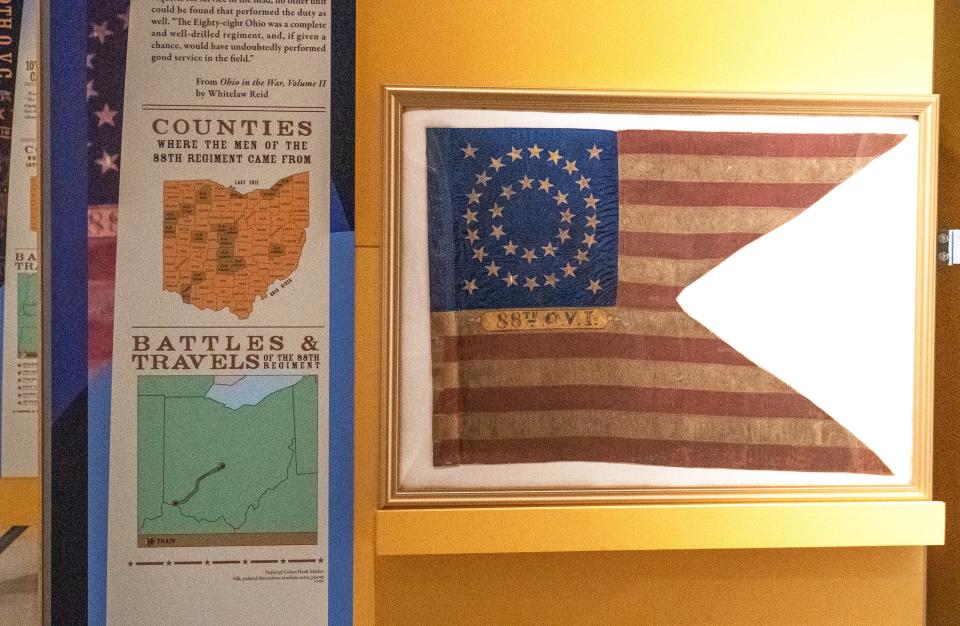
Camp Chase was one of the largest Union Army prisoner-of-war camp, housing thousands of captured Confederate troops during the Civil War. More than 2,000 soldiers are buried at the cemetery, most Confederate soldiers there died of poor conditions and disease while in prison. Eighty soldiers of the regiment also died of disease during the war.
The 88th OVI's battle flag, like many others in the war, features a "swallowtail" guidon design, which some experts say was a key source of inspiration for the unique Ohio state flag, which debuted in 1901.
Saving the flags
Baughman said the Ohio History Connection has been working since the late 1960s to preserve the antique battle flags, many of which were on display in the Ohio Statehouse rotunda until 1970.
Use in battle, and exposure to the elements over the years, have left some of the battle flags in tatters, and others in various states of disrepair.
"Once it's gone, it's gone," Baughman said.
Initial preservation efforts began with a commission authorized by the State Adjutant General, in consultation with the National Park Service, to glue the flags to nylon with a water-soluble glue. Now the Ohio History Connection sends flags to West-Virginia-based Textile Preservation Associates, which removes the nylon and glue and places the flag in a nearly invisible mesh before framing them.
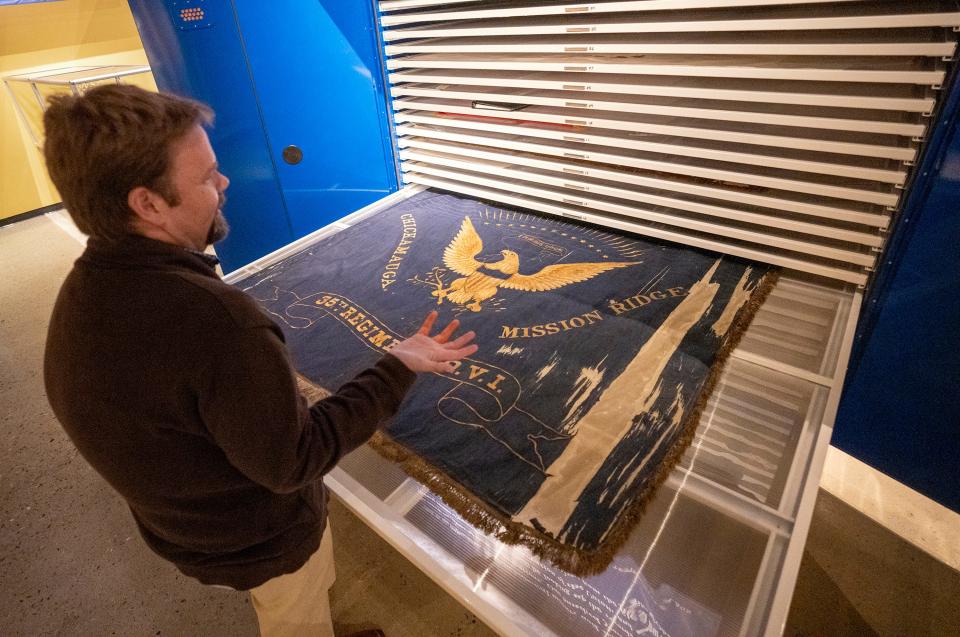
Only 28 of the over 500 flags in the Ohio History Connection collection have been fully preserved. Depending on the size and condition of the flag, the full conservation costs can run from $6,000 to $30,000.
"It's not cheap," Baughman said. "Of course, we'd like to do all the flags, but it's cost prohibitive."
Individuals or groups can contribute to the flag conservation fund in two ways: by donating any amount to go to the general flag conservation fund or they may adopt a specific flag. A minimum donation of $1,000 is required to adopt a flag.
Unit flags are still a respected and revered tradition in the United States armed forces, Mann said. Still often made of silk to this day, the Adjutant General's Department wants to preserve current unit's battle standards from damage, theft and destruction so that future generations have connections to those who serve today.
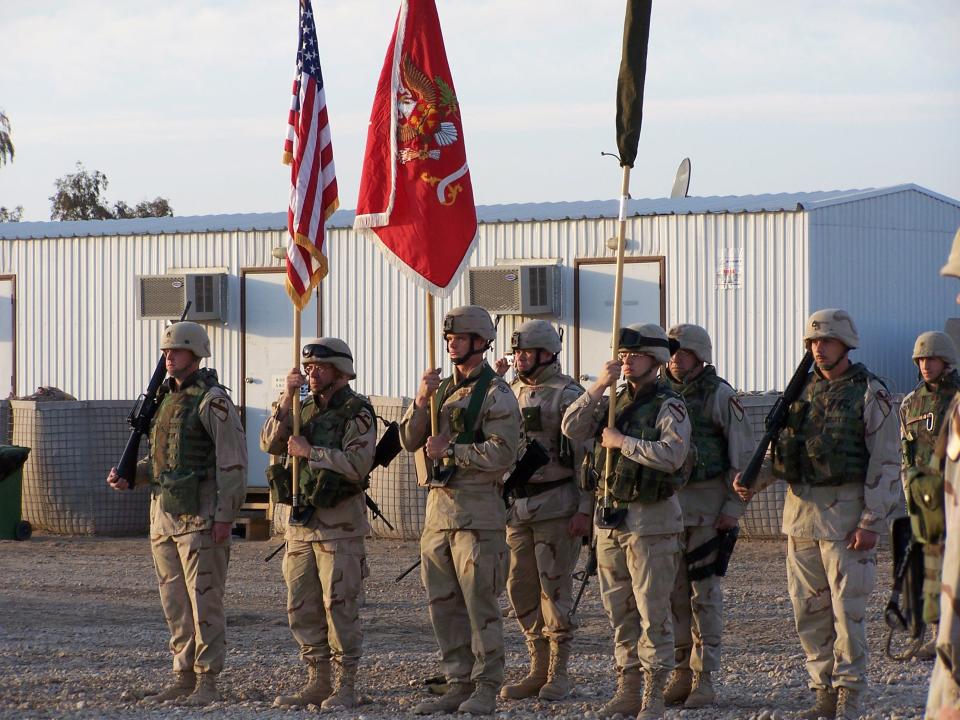
“We have canteens, and helmets and boots in our collection that help tell a story, when you think about the flags — it tells a better story,” Mann said.
From time to time, flags end up in the possession of families even though they are exclusively the property of the armed forces. If a family has a flag, Mann said, he wanted them to know that their "home is with the Army."
“My goal today is to collect those objects, preserve them, so that when someone is looking back at a flag in the war on terrorism … (they) have that same connection that families have with a flag that was at Gettysburg, or Antietam or Chickamauga,” Mann said.
@Colebehr_report
Cbehrens@dispatch.com
This article originally appeared on The Columbus Dispatch: How Ohio preserves nearly 1,000 battle flags from Civil War and beyond

